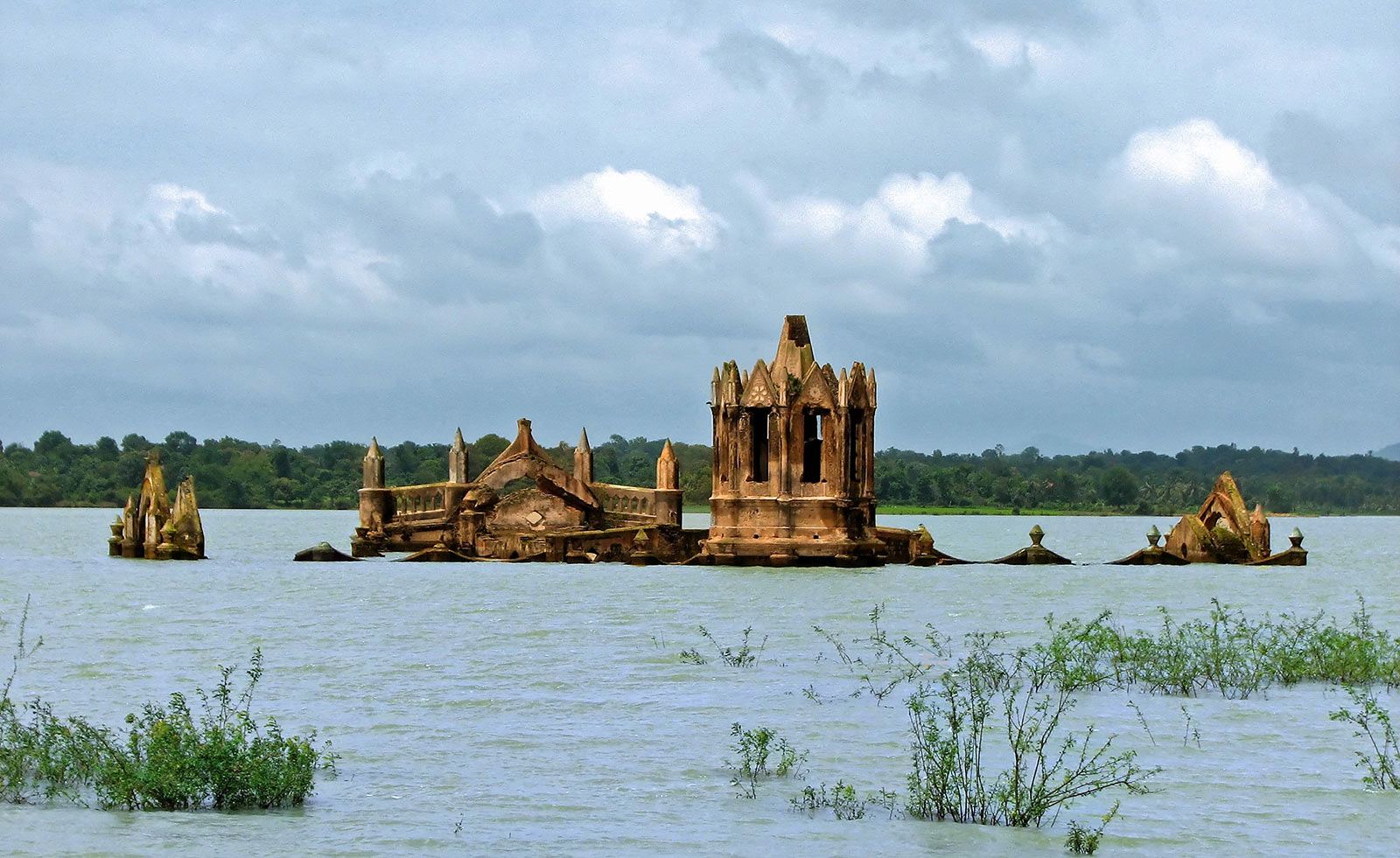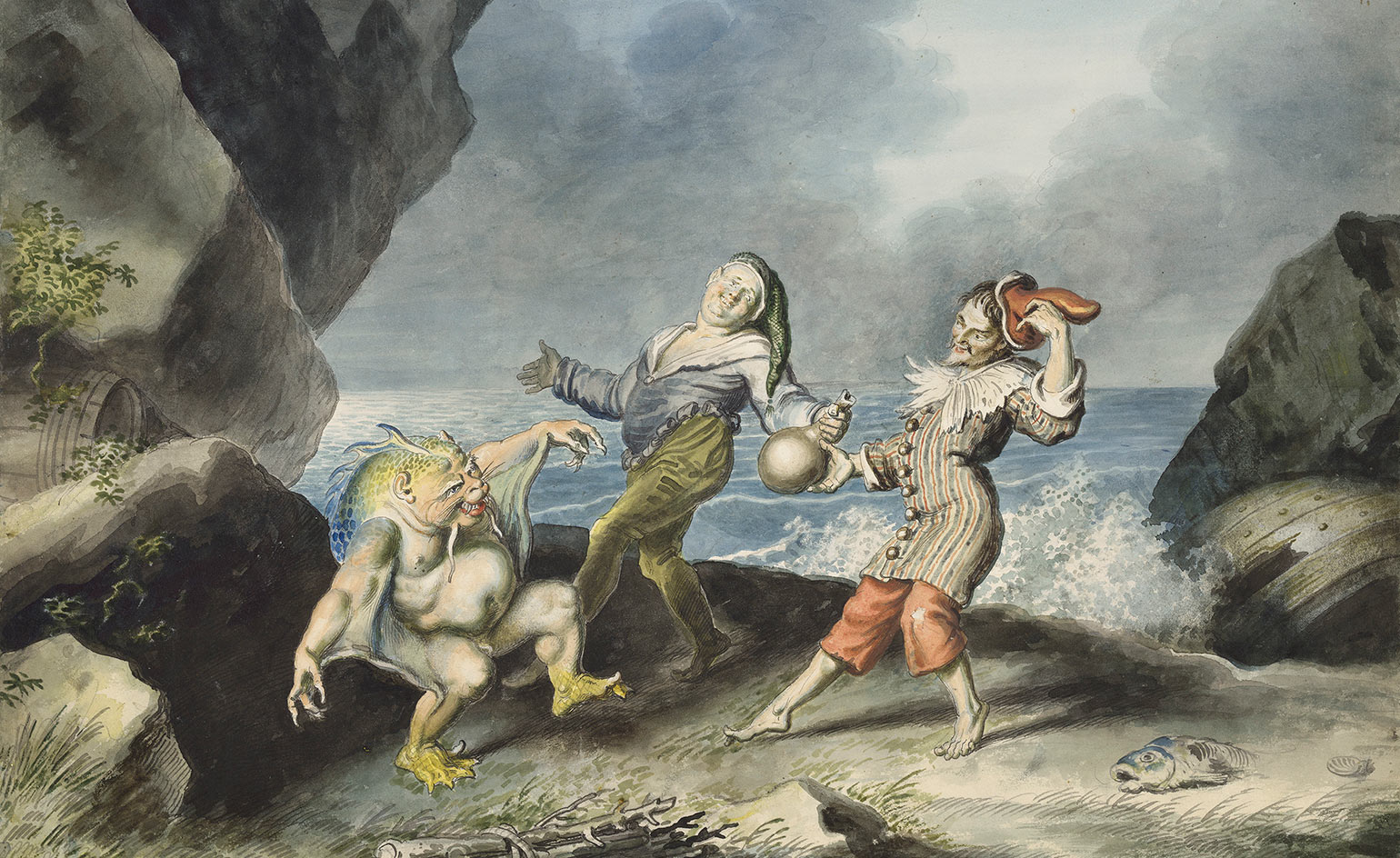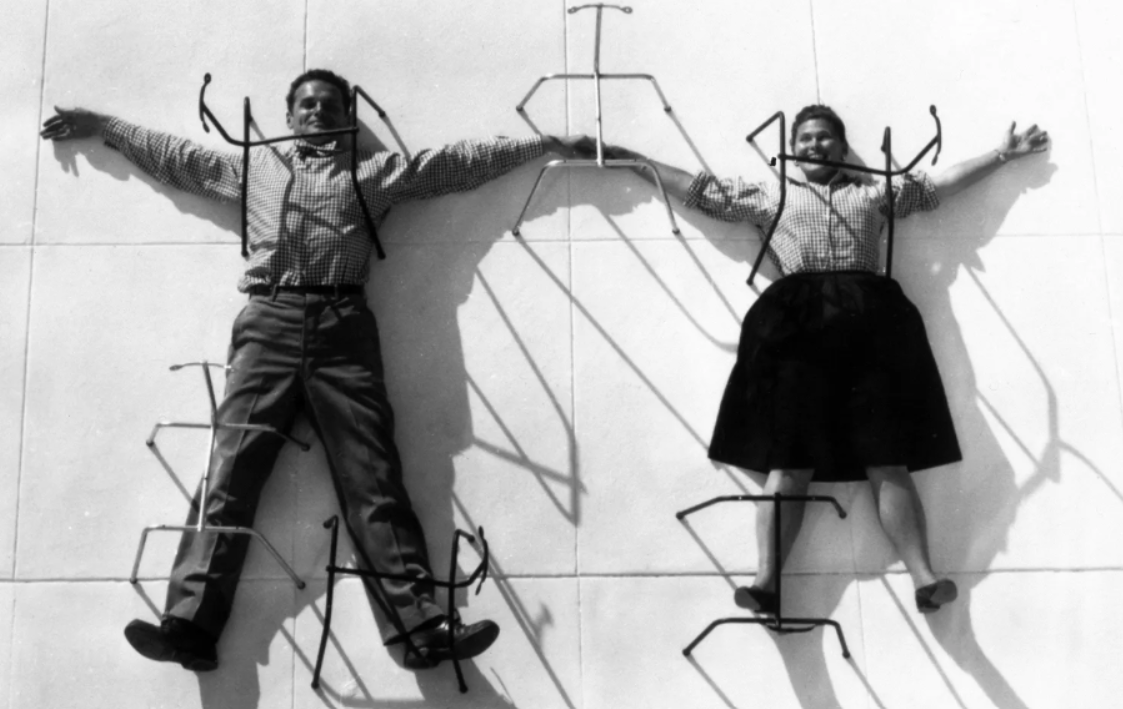Caruso St John and Marcus Taylor discuss the British Pavilion at 2018 Venice Architecture Biennale

Commissioned by the British Council and entitled ‘Island’, this year’s British Pavilion at the Venice Architecture Biennale promises to be a new, rooftop public space for Venice, as well as a powerful installation, and a platform for discussion that will offer opportunities for making connections and sparking lively debates. The curators, architects Adam Caruso and Peter St John of Caruso St John, and artist Marcus Taylor, wrapped the pavilion in scaffolding and placed a viewing platform on the top, aiming to create a piece that will be empty inside, in terms of physical things, but also full of ideas. We met with the curatorial team to discuss more.
W*: How would you describe your concept for the pavilion?
CSJ & MT: ‘Island’ is an equal collaboration between Marcus and ourselves, so it is as much an artwork as it is a piece of architecture. We’ve always been interested in art and enjoy working with artists. Artists have a broader, more intuitive way of working than architects, who are restricted by many conventions. It will be a different affair from most architecture biennales, and its effect more difficult to describe. Art shouldn’t be easy to understand, easy to describe, but just be somehow powerful and affecting. We hope that all the spaces of the pavilion will have that feeling.
W*: What was your main inspiration behind the pavilion’s design?
CSJ & MT: The word ‘Island” immediately makes you think of Venice, with its precarious relationship to the sea. And then of course, being the British Pavilion, it makes you think of Brexit and the current renegotiation of the nation’s position, with all its questions and uncertainties. The title also refers to many other things, including Shakespeare’s Tempest, where the protagonists are shipwrecked in a storm, and saved from drowning by being washed up on the beach of an unknown island, which turns out to be a paradise of sorts. So it is about being saved and lost at the same time. Finally, it refers to the constructed space we are making on the roof of the pavilion, a kind of raft which will have its own independence and serenity, lifted above the Giardini, with a beautiful view over the lagoon. The British Pavilion is, in a way, already a bit aloof, in its raised position at the end of the Giardini, on a little hill which is actually the highest piece of natural ground in Venice. The design will exaggerate this.
W*: What is the biggest challenge in designing a pavilion for the Venice Architecture Biennale?
CSJ & MT: We have been involved in past biennales so there were no big surprises. There are many countries and parties involved in the event, there are many negotiations and some of them can take a while, it is a bit like a mini-UN. Our neighbours, Canada, France and Germany were very understanding in accommodating our enlarged footprint.
W*: What do you think this design does that is different to other pavilions (British or otherwise)?
CSJ & MT: In the past few Architecture Biennales, the British Pavilion has held curated exhibitions on architectural themes. So we have taken a different approach for a change. There will be no exhibits; instead we have made a construction that can be experienced like a building. Its public nature is very important, that you are free to wander about, to meet people and participate or not. There will be a programme of events and performances but also, like any open space, you don’t know how it will be used. It will be a dramatic space to be in, whether it is busy or empty.
W*: What would you like the pavilion’s legacy to be?
CSJ & MT: The proposal has several dimensions; the construction of spaces that you can visit, the discussions and performances that will take place there, the publication with its texts, imagery and poetry, and photographs that will be taken of it. Through all these different impressions the themes are exposed. We hope that even people who don’t get to visit it but see it in the media will discuss it and have their own idea of its provocation.
W*: Do you have a favourite project from previous Biennale’s?
CSJ & MT: A favourite is Aldo Rossi’s floating theatre, the Teatro del Mondo, that was made for the first Architecture Biennale in 1979. It was made with scaffolding and wood also. Moored opposite the Piazza San Marco, it was an extremely evocative image, like a dream version of the city. From a distance all the buildings and little islands in Venice look as if they are floating on the sea. Being on the pavilion rooftop will be a bit like that too.
W*: How did your collaboration come about?
CSJ & MT: We first met Marcus and his partner, Rachel Whiteread at the Stirling Prize award ceremony in 2016. The practice had just won the prize for the Newport Street Gallery so, feeling confident, we approached Marcus and Rachel to collaborate on the competition for the United Kingdom Holocaust Memorial next to the houses of Parliament. Our team was shortlisted for the competition but sadly did not win. However, the experience of working together was very positive so when Marcus approached us with a fantastic idea for the British Pavilion we were very happy to team up again for the open submission.
See all the latest news and stories from Venice Architecture Biennale here

More inspiration for the team; a painting of The Tempest, Act II Scene 2, where Caliban, Stephano and Trinculo dance on the seashore, created by Johann Heinrich Ramberg
INFORMATION
For more information visit Caruso St John’s website and the British Council’s website
Receive our daily digest of inspiration, escapism and design stories from around the world direct to your inbox.
Ellie Stathaki is the Architecture & Environment Director at Wallpaper*. She trained as an architect at the Aristotle University of Thessaloniki in Greece and studied architectural history at the Bartlett in London. Now an established journalist, she has been a member of the Wallpaper* team since 2006, visiting buildings across the globe and interviewing leading architects such as Tadao Ando and Rem Koolhaas. Ellie has also taken part in judging panels, moderated events, curated shows and contributed in books, such as The Contemporary House (Thames & Hudson, 2018), Glenn Sestig Architecture Diary (2020) and House London (2022).
-
 How Charles and Ray Eames combined problem solving with humour and playfulness to create some of the most enduring furniture designs of modern times
How Charles and Ray Eames combined problem solving with humour and playfulness to create some of the most enduring furniture designs of modern timesEverything you need to know about Charles and Ray Eames, the American design giants who revolutionised the concept of design for everyday life with humour and integrity
-
 Why are the most memorable watch designers increasingly from outside the industry?
Why are the most memorable watch designers increasingly from outside the industry?Many of the most striking and influential watches of the 21st century have been designed by those outside of the industry’s mainstream. Is it only through the hiring of external designers that watch aesthetics really move on?
-
 This Fukasawa house is a contemporary take on the traditional wooden architecture of Japan
This Fukasawa house is a contemporary take on the traditional wooden architecture of JapanDesigned by MIDW, a house nestled in the south-west Tokyo district features contrasting spaces united by the calming rhythm of structural timber beams
-
 Arbour House is a north London home that lies low but punches high
Arbour House is a north London home that lies low but punches highArbour House by Andrei Saltykov is a low-lying Crouch End home with a striking roof structure that sets it apart
-
 A former agricultural building is transformed into a minimal rural home by Bindloss Dawes
A former agricultural building is transformed into a minimal rural home by Bindloss DawesZero-carbon design meets adaptive re-use in the Tractor Shed, a stripped-back house in a country village by Somerset architects Bindloss Dawes
-
 RIBA House of the Year 2025 is a ‘rare mixture of sensitivity and boldness’
RIBA House of the Year 2025 is a ‘rare mixture of sensitivity and boldness’Topping the list of seven shortlisted homes, Izat Arundell’s Hebridean self-build – named Caochan na Creige – is announced as the RIBA House of the Year 2025
-
 In addition to brutalist buildings, Alison Smithson designed some of the most creative Christmas cards we've seen
In addition to brutalist buildings, Alison Smithson designed some of the most creative Christmas cards we've seenThe architect’s collection of season’s greetings is on show at the Roca London Gallery, just in time for the holidays
-
 In South Wales, a remote coastal farmhouse flaunts its modern revamp, primed for hosting
In South Wales, a remote coastal farmhouse flaunts its modern revamp, primed for hostingA farmhouse perched on the Gower Peninsula, Delfyd Farm reveals its ground-floor refresh by architecture studio Rural Office, which created a cosy home with breathtaking views
-
 A revived public space in Aberdeen is named Scotland’s building of the year
A revived public space in Aberdeen is named Scotland’s building of the yearAberdeen's Union Terrace Gardens by Stallan-Brand Architecture + Design and LDA Design wins the 2025 Andrew Doolan Best Building in Scotland Award
-
 A refreshed 1950s apartment in East London allows for moments of discovery
A refreshed 1950s apartment in East London allows for moments of discoveryWith this 1950s apartment redesign, London-based architects Studio Naama wanted to create a residence which reflects the fun and individual nature of the clients
-
 In this Cotswolds home, drama meets minimalism
In this Cotswolds home, drama meets minimalismCotswolds home Hiaven house, with interiors designed by McLaren Excell, is a perfect blend of contemporary chic and calm, countryside drama